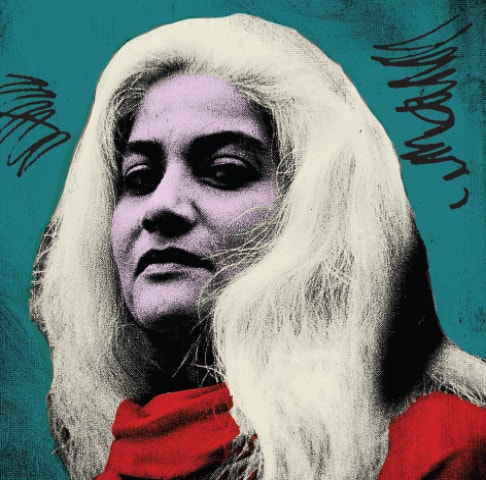
Another academic year is about to begin. The number of young people wanting to study art and design is growing. Young people in Pakistan seem to know something that parents and policymakers do not. Subjects that will materialise into successful jobs are usually identified as medicine, IT, business studies and engineering. School and college curricula channel young people in these directions.
For the last five decades, education has been serving economic development, and public policies reflect this. The term “human capital”, developed by economists Gary Becker and Jacob Mincer in the ’60s, is overused as an aim to produce labour capable of increasing economic growth.
However, as we know, youth has its own recalcitrance, and as society’s elders are less and less able to guarantee pathways to success, there is a growing urge in young people to plan life journeys on their own terms.
Along with business school, computer sciences and pharmacy, a surprising number of students at the University of Karachi opt for philosophy, literature, sociology and international relations. There is an underlying eagerness to understand life.
What is more intriguing is the support young people get, especially those from low-income families, to study art. A welder encourages his only son to develop his good drawing skills by enrolling him in art school; a family living in two rooms give up one precious room so that their son can complete his paintings for his exams. Recently, a second year student, whose younger brother had just committed suicide after feeling he had no future, came to discuss his desperation to continue studying fine art, despite feeling the pressure to earn for the family. A young girl, married off before she could start her first term, asked through tears of panic, if she should have an abortion, so she could continue her fine art degree. In fact, she was encouraged to take a year off and return to her studies later, which she did with her husband’s blessings.
This quiet rebellion is visible in Pakistan, dominated as it is by a young population, by the growing numbers of art and design students, film makers, and creative professionals.
Sometimes, as I drive up to the Department of Visual Studies at the University of Karachi, I am aware of the madness of teaching art and design in times when one of my graduates is killed in a bomb blast and the city struggles on a daily basis for good roads, affordable hospitals, comfortable transport, and food, while dodging stray bullets.
How crazy is it to tell young people who live in real despair to notice the rainbow colours in a dew drop? While a lot of sociologists around the world comment on the growing narcissistic individualism of selfies and video diaries, art and design encourages a more thoughtful individualism.
Stanley Hall describes youth as a time of “storm and stress” and fluctuating emotions. In fact, I find too much is made of the confusion of youth. Young people have great clarity and insight — the storm is created by those who feel the status quo will be disturbed.
I prefer Plato’s description of youth as spiritual drunkenness, as the verse on a Karachi bus declares: Aaghaz-i-jawani hai hum jhoom ke chaltay hain/ Loag samajhte hain ke hum pee ke nikalte hain [It is my youthfulness that makes me swagger, people assume I have stepped out in a drunken state].
While Pakistani youth have not formed identifiable movements of rebellion — such as the Beat Generation, hippies, mods and rockers, or punk — social mobility, which defines much of Pakistani society, has unravelled the neat edges of social roles. Women work, the son of a mason becomes an architect; a university teacher becomes a pop musician.
In their study ‘Unable to Conform, Unwilling to Rebel? Youth, Culture, and Motivation in Globalising Japan’, Toivonen, Norasakkunkit and Uchida suggest that the reluctance to conform in a conformist society sometimes creates tensions that lead young people to a place outside of society. In Japan, the Hikomori are socially withdrawn, socially and occupationally inactive youth. In Pakistan they may take to drugs, crime or become pawns in street politics. A contrasting group in Japan uses creative and integrative ways to negotiate conformist pressures tactfully. Art and design activities allow innovation, non-conformist ideas to be explored positively, productively and more subtly, without causing what Stanley Cohen calls society’s “moral panic.”
This quiet rebellion is visible in Pakistan, dominated as it is by a young population, by the growing numbers of art and design students, filmmakers, and creative professionals. Film and breakdance have been added to the love of sports in Lyari, fine artists have stepped out of galleries on to the streets painting murals and the internet is full of Vimeo, YouTube and SoundCloud contributions.
Young people have realised art not just teaches a craft, but can develop a sense of achievement, self-confidence, relaxation and good communication skills. Yet, art, music or creative writing remain absent as subjects in most schools and colleges. Even teacher-training colleges do not have the instruction of art and creativity as a subject. Policymakers are still not listening.
Durriya Kazi is a Karachi-based artist and heads the department of visual studies at the University of Karachi
Published in Dawn, EOS, January 14th, 2018














































